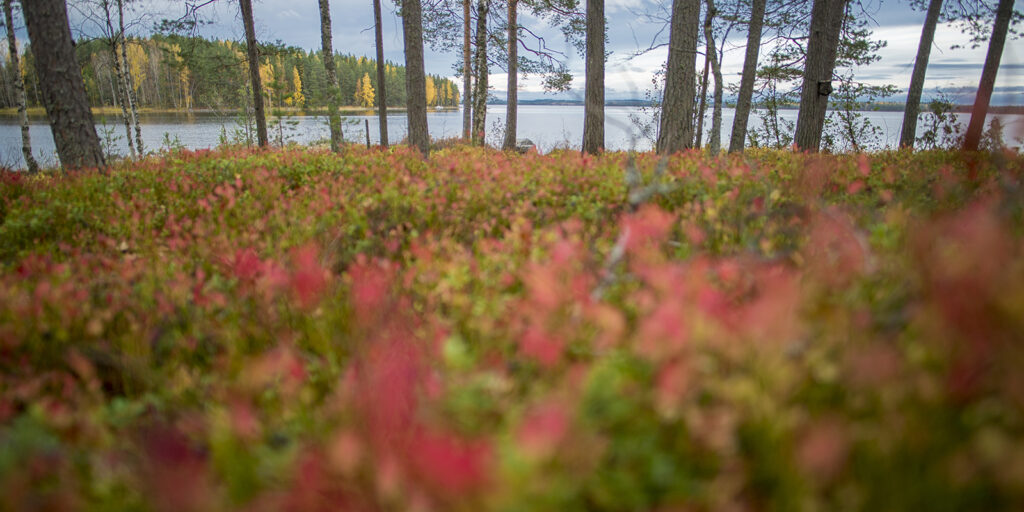A group of scientist: forest bioeconomy criticism has too narrow perspective

”Considering market realities, sustainable forest management requirements and existing regulations around bioenergy, we do not expect to see a paradigm shift towards large scale cutting of forests solely for bioenergy,” says a group of forestry and environment scientists in their open letter.
The letter is published, for example, on the website of the European Forest Institute. According to one of the signatories, Professor Pekka Kauppi, the largest work upon the letter has been carried out by well-known forest researchers Werner Kurz, Göran Berndes and Lauri Hetemäki.
As to the Finnish point of view, Kauppi wants to emphasize the magnificent development on timber use. ”What we get of the same amount of timber now and previously, it is just astonishing. In 1970s, for example, we just let important parts of trees to flow in rivers in wastewaters, but now we use everything,” he says.
And the development has not been finished, as can be seen from, for example, the Forest bioeconomy future catalogue published by the Finnish Forest Association.
A tree is not the forest
The letter emphasizes the signatories’ belief that bioenergy from sustainably managed commercial forests can contribute positively to climate change mitigation. According to the letter, the narrow view of bioeconomy critics means looking at the forest on a level of single forest stand or even more, a single tree.
From this view you can see only that ”a tree stops growing and accumulating carbon when it is cut, and the carbon stock in a single stand decreases at harvest.” The view overlooks fundamental principles behind forest management, which aims at maintaining the forest growth on a landscape level.
”In the absence of management, forest growth rates decline and disturbance risks increase as trees become mature. Therefore… they have a lower sink strength and may become carbon sources instead of sinks.”
The key is to increase the forest growth, that is, carbon sink, on a landscape level by sustainable harvesting of trees and managing stem densities and species composition. This can be carried out by forestry operations, such as species selection, planting and other management options.

Harvests and growth have increased simultaneously
There are plenty of examples of how to do this, the best one maybe in the Nordic countries. The common factor of these examples is that the carbon stock at a regional or national level has increased simultaneously with increases in harvesting.
Another example are the forests in the European Union, where the carbon sink and harvesting rate have increased simultaneously since the 1960s. As a result, EU forests and the forest sector currently achieve an overall climate change mitigation impact that corresponds to about 13 percent of the total EU greenhouse emissions.
Another, often bypassed fact is that forest bioenergy producing is not an independent enterprise but an integral part of forest use. Bioenergy almost never is the main product, but instead, it utilises the sideflows of, for example, sawn wood, pulp, paper and chemicals.
These sideflows consist of, for example, small trees from thinnings, logging residues, and low-quality wood that is not suitable for the main products. And nobody is planning to change this, mostly because it would be unprofitable: producing bioenergy just does not bring as much revenues as the main products.
Bioenergy does not create overharvesting
This also is the reason why the signatories do not believe in the often expressed danger that the wood demand for bioenergy may rise enormously, threatening the existence of forests. This is not possible as long as bioenergy is produced only from sideflows of more profitable production.
The letter also recalls the Paris Agreement target to withdraw carbon dioxide from the atmosphere. So far, there are no other tools to do this than enhancing the growth of vegetation.
According to the signatories, ”bioenergy with carbon capture and storage is one of the major options for atmospheric carbon dioxide withdrawal.” Therefore a more balanced perspective towards the role of forest use is needed.
Forest assimilates carbon dioxide from the atmosphere, it stores carbon in soils, standing biomass, and in wood-based products, and it helps to avoid greenhouse gas emissions by displacing products that are unfriendly for the climate.

The letter of the group on the homepage of the European Forest Insitute EFI
Forest bioeconomy future catalogue
Kirjoita kommentti